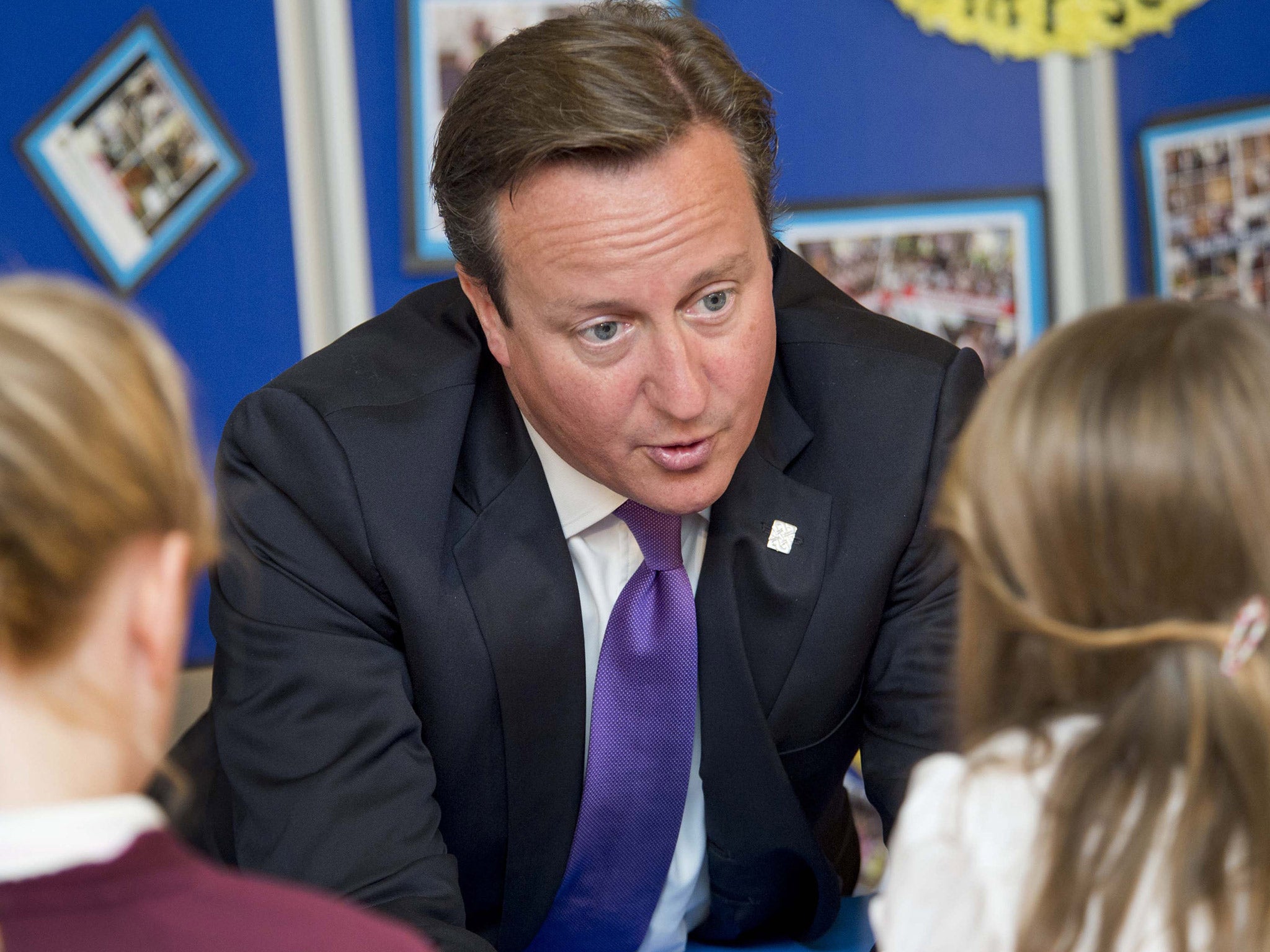The only choice in schools is between the one you want and the ones you don’t
Eton-educated David Cameron is the first Conservative Prime Minister to send his child to a state secondary


With high-flying parents like hers, you can imagine Nancy Cameron knows her own mind. So as her father, the Prime Minister, said last year of their hunt for a secondary school for the 11-year-old: “My daughter has got a very large say in the matter.”
It is fantastic that the Camerons are using the state system – in fact, Eton-educated David Cameron is the first Conservative Prime Minister to send his child to a state secondary. Their children go to a primary in the state sector in central London. It is not out of electoral expediency that Nancy won’t, for example, go to Marlborough, Samantha’s alma mater (although I imagine it wouldn’t have looked great on opponents’ campaign leaflets). Cameron has, I believe, a genuine personally held belief in the state education system. He is right: our best state schools are brilliant. Reports are that Nancy will go to Grey Coat Hospital, a Church of England secondary that is rated outstanding.
Yet judging by the numbers of children who are missing out on their first choice of secondary school, I wonder whether the Prime Minister understands the despair of families at the sharp end of National Offer Day this week. Tens of thousands of children have missed out on their school of choice, with the worst hit areas in London and Birmingham seeing half of children failing to secure a place at their first choice. As I walked back from the school run yesterday, I overheard one mother agonisingly saying to another there was “no way out” of their predicament. If Nancy Cameron has indeed “got a very large say in the matter”, then that is clearly not the case for everyone.
The word “choice” in education places always amuses me because, in the most competitive areas of the country, the “choice” can be between: a brilliant school that every parent wants to send their children to (so the chances of getting in are slim); an OK one that is two bus rides away; and a seriously bad one. That is not choice, that’s good or bad fortune. A Department for Education spokesman said on National Offer Day that “last year over 95 per cent of parents got one of their top three choices”. But that’s the top three – not their first choice. What happens when No 3 or even No 2 on your list of “choices” is a school you really don’t want but you have to list anyway?
The reason, in part, for the rise in demand for school places is population boom (do you think that the Government might have seen that coming?) as well as a rise in immigration. The DfE says the Government has invested more than £5bn to create more than 445,000 new school places since 2010. But the focus has been on creating new free schools, even in boroughs where there is no demand, instead of targeting the most competitive areas, which should have been the priority.
This got to the point last year when it emerged that Michael Gove had diverted £400m from the basic need fund, which is supposed to guarantee places for pupils where there is the greatest demand, to help plug an £800m black hole in the free schools budget – something described as “lunacy” by his Liberal Democrat Coalition colleagues.
The Government – at least on the Conservative side – believes the free schools programme has been a success. Yet if, after nearly five years, it has been such a success, why is there now such a crisis in school places? Free schools are a great adaptation of Tony Blair’s academies programme, but the mistake was to allow them to be decoupled from demand.
The second mistake was to axe Labour’s Building Schools for the Future programme, because the desperate shortage of places is, according to the Local Government Association, exacerbated by crumbling buildings and classrooms. If only we all had the luxury of choice that the Camerons have.
Join our commenting forum
Join thought-provoking conversations, follow other Independent readers and see their replies
0Comments